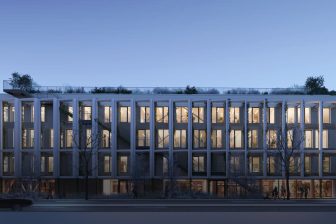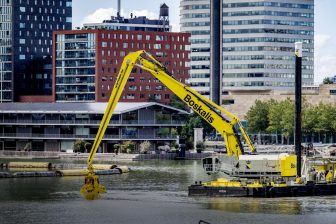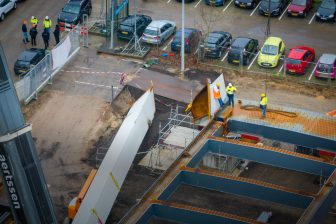JBIC loan to Mass Rapid Transit System Bangkok
JBIC Signs Japanese ODA Loan Agreement for New Project in Thailand Supporting Development of Mass Rapid Transit System to Relieve Traffic Congestion and Improve Urban Environment in Bangkok
1. Japan Bank for International Cooperation (JBIC; Governor: Koji Tanami) signed a Japanese ODA loan agreement totaling up to 62,442 million yen with the Mass Rapid Transit Authority of Thailand (MRTA) to finance the Mass Transit System Project in Bangkok (Purple Line) (I). This is the first Japanese ODA loan in six years for a new project in Thailand (the last offered was in 2002).
2. In this project, a new mass rapid transit (MRT) Purple Line will be constructed to connect Bang Sue in Bangkok and Bang Yai in the neighboring Nonthaburi Province. This will meet growing demand for passenger transport and relieve traffic congestion in the metropolitan Bangkok as well as contribute to development of the regional economy and improvement of the urban environment through reduction of vehicle exhaust fumes and greenhouse gas (GHG) emissions. The proceeds of this loan are used for civil works of the elevated tracks, stations and a train depot as well as consulting services. A private concessionaire will operate and maintain the Purple Line.
3. In this project, universal design will be adopted, including such barrier-free facilities as elevators, ramps and restrooms for the physically disadvantaged, as its adoption in the underground MRT Blue Line, Japanese ODA loan-funded project, received high praise from the associations of people with disabilities. This will further facilitate their use of the MRT lines as a means of their transport, thus being expected to increase their schooling and working opportunities. The Thai government is also considering new bus routes departing from the new constructed stations and the introduction of a integrated ticketing system for the Bangkok MRT network, including the MRT Blue Line, the elevated Bangkok Transit System (BTS) and city busses to increase the effectiveness of the project.
4. The metropolitan Bangkok area, having a population of about 10 million, is a political and economic center of Thailand. As industrial activities keep growing in line with the country’s economic recovery after the Asian currency crisis, the number of vehicles on the road has increased significantly, causing serious traffic congestion and pollution from their exhaust fumes.[1] Despite the fact that BTS began operation in December 1999 and MRT Blue Line in July 2004 (of which Japanese ODA loans supported the five phases (MRTA Initial System Project I-V)), their routes only cover the central districts of Bangkok. As a result, 70% of the commuters using public transport services use buses, and there is a need to expand the networks and extend routes of the Bangkok MRT system in order to further induce modal shift from road to rail transport. Along the Purple Line to be developed with funding from this loan are high population density areas. In addition, since the area around the Bang Yai terminal is to be developed as a commercial district, the Purple Line is the highest priority project among those planned by the Thai government in the Bangkok MRT system projects. The projected daily ridership of the Purple Line is 200,000 in 2013 when it begins service and 290,000 in 2022.
5. In the Medium-Term Strategy for Overseas Economic Cooperation Operations, JBIC placed a priority on development of city functions, including improvement of the urban environment. JBIC is thus committed to supporting sustainable economic growth in Thailand through efforts following this strategy, including this project that serves to relieve traffic congestion and air pollution in Bangkok.
U las zojuist één van de gratis premium artikelen
Onbeperkt lezen? Profiteer nu van de introductieaanbieding voor € 10,- per maand.
Bent u al abonnee?



